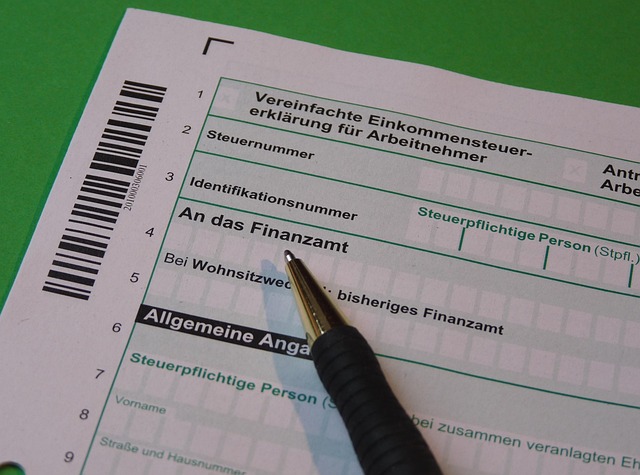Introduction: The Allure of High Returns
The promise of 12% annual returns on investments sounds incredibly appealing. Who wouldn’t want their money to grow that fast? Financial personalities like Dave Ramsey often cite this figure, but is it realistic, or just another investing myth?

For more on realistic financial goals, check out WealthLark’s guide to the 7% Rule for Savings.
This comprehensive 1,500-word guide will:
✔ Analyze historical market data to see if 12% returns are achievable
✔ Compare different asset classes (stocks, bonds, real estate)
✔ Debunk common misconceptions about high-yield investing
✔ Provide expert-backed strategies to maximize returns
✔ Warn about hidden risks that could derail your portfolio
Section 1: What Does “12% Returns” Really Mean?
Understanding Annualized vs. Actual Returns
Many investors misunderstand how returns are calculated:
- Annualized return: The average gain per year over multiple years (e.g., 12% over 20 years)
- Actual yearly returns: The real ups and downs (e.g., +30% one year, -10% the next)
Example:
If you invest $10,000 and earn:
- Year 1: +20% → $12,000
- Year 2: -10% → $10,800
Your annualized return is ~4%, even though one year gained 20%.
The Power (and Limits) of Compound Growth
The Rule of 72 shows how long it takes money to double:
- At 12% returns, money doubles every 6 years
- At 7% returns, it takes ~10 years
But taxes, fees, and inflation can significantly reduce real-world results.
For long-term wealth-building strategies, see WealthLark’s 5 Stages of Wealth.
Section 2: Historical Market Performance – Can Stocks Really Deliver 12%?
S&P 500: The Gold Standard for Stock Returns
The S&P 500 index has averaged ~10% annually since 1926 (including dividends). However:
| Time Period | Avg. Annual Return | Best Year | Worst Year |
|---|---|---|---|
| 1980-2010 | 12.71% | +37% (1995) | -37% (2008) |
| 1990-2020 | 11.55% | +32% (2013) | -18% (2022) |
| 2000-2020 | 7.48% | +29% (2019) | -38% (2008) |
Key Takeaway:
- 12% returns happened in some 30-year periods
- But shorter timeframes (10-15 years) often fall short
- Massive crashes (-30% to -50%) can wipe out gains
For retirement planning, learn about the 4% Rule to avoid outliving your savings.
Why Dave Ramsey’s 12% Claim Is Controversial
Ramsey often cites “good growth stock mutual funds” averaging 12%. Critics argue:
❌ Survivorship bias: Only successful funds are highlighted
❌ High fees: Many active funds underperform after fees
❌ Past ≠ Future: 1980s-90s had exceptional growth (tech boom)
Section 3: Beyond Stocks – Can Other Assets Deliver 12%?
Real Estate (Rentals & REITs)
- Rental properties: Can yield 10-15% via cash flow + appreciation
- REITs: Typically 8-12% (lower risk but less control)
Pros:
✔ Inflation hedge (rents rise with prices)
✔ Leverage (mortgages amplify returns)
Cons:
✖ High upfront costs (down payments, repairs)
✖ Illiquidity (hard to sell quickly)
For inflation-resistant assets, read WealthLark’s guide on Best Assets for Inflation.
Private Equity & Venture Capital

- Top-tier VC funds can deliver 20-30%+ (e.g., early Uber investors)
- But most startups fail – high risk!
Corporate Bonds & High-Yield Debt
- Junk bonds (BB-rated): ~6-9%
- Emerging market debt: ~8-12% (with currency risk)
Cryptocurrencies & NFTs
- Bitcoin (2010-2020): ~200% annualized (!)
- 2022-2023: -60% crash
- Extreme volatility makes consistent 12% unlikely
Section 4: Realistic Strategies to Maximize Returns
Strategy 1: The Index Fund Approach (7-10% Returns)
- Invest in low-cost S&P 500 ETFs (e.g., VOO, SPY)
- Historical return: ~10% before inflation
- Minimal effort, broad diversification
Strategy 2: Dividend Growth Investing (8-12% Returns)
- Buy blue-chip stocks with rising dividends (e.g., Coca-Cola, Johnson & Johnson)
- Reinvest dividends for compounding
- Example: $10,000 in SCHD (Dividend ETF) → ~10% annual return since 2012
Strategy 3: The Bogleheads’ 3-Fund Portfolio
- 60% U.S. stocks (VTI)
- 30% International stocks (VXUS)
- 10% Bonds (BND)
- Expected return: 7-9% with lower volatility
Strategy 4: Alternative Investments (High Risk, High Reward)
- Peer-to-peer lending (8-12%)
- Farmland/ timberland REITs (10-15%)
- Angel investing (potential for 20%+ but high failure rate)
For a step-by-step wealth-building plan, see WealthLark’s 10 Steps to Financial Freedom.
Section 5: The Hidden Risks Chasing 12% Returns
Risk 1: Sequence of Returns Risk
- Retiring during a market crash (e.g., 2008) can destroy portfolios
- Example: A 50% drop requires a 100% gain just to break even
Risk 2: Inflation & “Real” Returns
- 12% nominal return with 6% inflation = Only 6% real return
Risk 3: Behavioral Mistakes
- Panic selling in downturns
- Chasing “hot” stocks (e.g., meme stocks, crypto bubbles)
Risk 4: High Fees Destroying Gains
- A 2% annual fee on a 12% return = 10% net return
- Over 30 years, this could cost $500,000+ in lost gains
For tax-saving strategies, explore WealthLark’s Biggest Tax Deductions.
Section 6: Expert Consensus – What’s a Realistic Return?
Pessimistic View (4-6%)
- Ray Dalio (Bridgewater): “The 60/40 portfolio will return 4-5% in the 2020s.” (Source: CNBC)
- Warren Buffett: “Expect 6-7% from stocks long-term.” (Source: Berkshire Hathaway Letter)
Moderate View (7-9%)
- Vanguard Research: “Global stocks will average 7-9% over next decade.” (Source: Vanguard)
- Bogleheads: “A balanced portfolio should target 5-8%.” (Source: Bogleheads Wiki)
Optimistic View (10-12%)
- Dave Ramsey: “Good mutual funds average 12% over time.” (Source: Ramsey Solutions)
- Cathie Wood (ARK Invest): “Disruptive tech could deliver 15-20%.” (Source: ARK Invest)
FAQs: 12% Investment Returns Explained
1. Is a 12% annual return realistic for long-term investors?
While some periods (like 1980–2010) saw 12% average returns in the S&P 500, consistent yearly 12% gains are rare. Most experts suggest 7–10% is more achievable over decades.
2. What’s the best investment for 12% returns?
Historically, growth stocks, real estate (REITs), and private equity have delivered 10–15% returns, but they come with higher risk.
3. Can index funds give 12% returns?
Over 30+ years, the S&P 500 has averaged ~10%. While 12% is possible, it’s not guaranteed every year.
4. How does inflation affect 12% returns?
If inflation is 6%, a 12% nominal return becomes just 6% real returns—halving your purchasing power.
5. What’s the Rule of 72 for 12% returns?
At 12%, your money doubles every 6 years (72 ÷ 12 = 6).
6. Did Dave Ramsey really say 12% returns are possible?
Yes, Ramsey claims “good growth stock mutual funds” can average 12%, but critics argue this ignores fees and survivorship bias.
7. Are 12% returns possible in real estate?
Yes—rental properties and REITs can yield 10–15% through cash flow + appreciation, but require active management.
8. Can bonds or CDs give 12% returns?
No. Corporate bonds average 4–6%, and CDs rarely exceed 3–5%.
9. What’s the safest way to get close to 12% returns?
A diversified mix of:
✔ S&P 500 index funds (~10% historical returns)
✔ Dividend growth stocks (8–12%)
✔ Real estate (REITs) (8–12%)
10. How much would $10,000 grow at 12% for 20 years?
$10,000 → ~$108,000 (using compound interest).
11. Why do most financial advisors say 12% is unrealistic?
Because fees, taxes, and market crashes reduce actual returns. Vanguard predicts 4–7% returns for 2020s.
12. Can crypto or NFTs give 12% returns?
Possibly, but they’re extremely volatile. Bitcoin gained 200% in 2020 but crashed -60% in 2022.
13. What’s the biggest risk chasing 12% returns?
Sequence risk—retiring during a market crash (like 2008) can wipe out decades of gains.
14. How do fees impact 12% returns?
A 2% annual fee on a 12% return = 10% net return, costing $500K+ over 30 years.
15. Should I use leverage (loans) to boost returns to 12%?
Only for experienced investors—leverage can magnify losses (e.g., 2022 crypto crash).
For more investing insights, read: